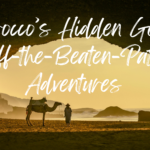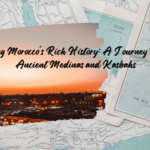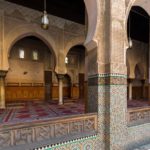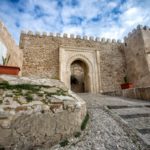Introduction: A Tapestry of Cultures: Morocco’s Unique Blend of Influences
Morocco, a land where the past and present intertwine in a vibrant tapestry of cultures, is a melting pot of influences from across the globe. From ancient Berber traditions to the legacies of Arab, African, and European civilizations, Morocco’s rich heritage is a testament to the diverse peoples who have left their mark on this enchanting land. Join us as we unravel the threads of Morocco’s cultural tapestry, exploring the unique blend of influences that make it a truly captivating destination.
Berber Roots: Guardians of Tradition
At the heart of Moroccan culture lies the ancient heritage of the Berber people, the indigenous inhabitants of North Africa. With a history dating back thousands of years, the Berbers have preserved their rich traditions and customs, from vibrant textiles and intricate jewelry to the rhythmic beats of traditional music. Explore the remote villages of the Atlas Mountains or the bustling markets of Marrakech, and you’ll encounter the enduring spirit of Berber culture, woven into the fabric of everyday life.
Arab Influence: A Legacy of Islam
The arrival of Arab conquerors in the 7th century brought Islam to Morocco, shaping the country’s cultural and architectural landscape in profound ways. From the iconic minarets that dot the skyline to the intricate tilework and geometric patterns that adorn mosques and palaces, Arab influence is pervasive throughout Morocco. Immerse yourself in the vibrant atmosphere of a bustling souk or partake in the rituals of Moroccan hospitality, and you’ll experience the warmth and hospitality that are hallmarks of Arab culture.
African Connections: Crossroads of Trade
Situated at the crossroads of Africa, Europe, and the Middle East, Morocco has long been a hub of trade and commerce, connecting diverse peoples and cultures from across the continent. The rhythms of African music infuse the streets of Morocco’s cities, while the flavors of African spices add depth and complexity to traditional Moroccan cuisine. Explore the coastal towns of Essaouira and Tangier, and you’ll discover the enduring legacy of Morocco’s African connections, reflected in the vibrant art, music, and cuisine of the region.
European Influences: Legacies of Colonialism
In the 19th and 20th centuries, Morocco fell under the influence of European colonial powers, including France and Spain, leaving a lasting imprint on its culture and society. European architecture graces the streets of cities like Casablanca and Rabat, while French and Spanish languages mingle with Arabic and Berber dialects in everyday conversation. Delve into Morocco’s colonial history at museums and historic sites, and you’ll gain a deeper understanding of the complex interplay of cultures that defines modern-day Morocco.
Conclusion: A Mosaic of Diversity
As we conclude our exploration of Morocco’s unique blend of influences, we’re reminded that the country’s cultural tapestry is as diverse and vibrant as the landscapes that shape it. From the ancient traditions of the Berber people to the legacies of Arab, African, and European civilizations, Morocco’s cultural heritage is a testament to the resilience and adaptability of its people. Whether you’re wandering through the labyrinthine streets of a medina or sipping mint tea in a bustling café, take a moment to appreciate the rich tapestry of cultures that make Morocco a truly extraordinary destination.








